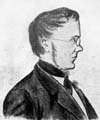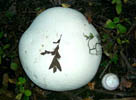
Trivia


Top Ten
 Trivia |  |  Top Ten |
All books or articles ... are cited here in as complete and accurate a manner as possible. Only the most easily comprehensible abbreviations are used, as it has been the author's experience as a teacher and investigator for thirty-five years, that abbreviations in citations have been responsible for far too many mistakes. Many have been the hours and even days wasted in tracing down a paper that had been incompletely, or imperfectly cited.
p. vii, A Text-book of Mycology
This has been my experience as well.
Back to top
for author of fungi
The scientific name of a fungus (or any other organism, for that matter) is followed by the name of the person or persons who first described it in the scientific literature, along with the names of the people who gave the name its current form. These people are all known as authors of the name. Again, until recently, authors' names have been cited in an abbreviated form, a practice which I see no reason to continue, as (a) we no longer have pay printers to set type by hand, and (b) recent increases in the number of biologists have rendered many traditional abbreviations ambiguous.
Back to top
In general, author citations are only used after genera and species. The first name after the name of the taxon is the person who first used or published the name, as with Lactarius chrysorheus Fries. Elias Magnus Fries first published this species, and no one has messed with it since. If a species was published before Fries's (1821 - 1832) Systema mycologicum or was published invalidly, then the name of the person who validated it goes after the name, with a colon in between them: Amanita citrina Ja.C. Schaeffer: S. F. Gray. In this case, the species was first published in Jacob Christian Schaeffer's (1762 - 1774) Fungorum qui in Bavaria et Palatinatu circa Ratisbonam nascuntur, and later validated by Samuel Frederick Gray. The word "ex" is sometimes used between the two authors' names here instead of the colon.
Back to top
The original author (and original validator) end up enclosed in parentheses if the taxon is a species transferred to another genus, or if the taxon changes levels. For example, Hypoxylon fragiforme (Persoon: Elias Magnus Fries) Kickx was first named by Persoon, validated by Elias Magnus Fries, and transferred to its current genus by Kickx. On the other hand, the genus Cryptoporus (Peck) C. L. Shear was created as a section of the Polyporaceae by Peck, and later raised to the status of a genus by Shear. Moving in the other direction, Amanita pantherina var. velatipes (Atkinson) D. T. Jenkins was named as an independent species by Atkinson, but was demoted to a variety of Amanita pantherina by David T. Jenkins.
Back to top
Sometimes a taxon was validly named but imperfectly defined; in this case, the word emend is used, followed by the name of the person who cleaned it up. Comatrichia C. G. T. Preuss emend Rostafinski was validly named by C. G. T. Preuss, but Rostafinski is responsible for the modern definition of the taxon. If there are several competing conceptions of the taxon, the word sensu is used. The terminology Amanita virosa sensu Amer. auct. (=sensu American authors) is used to show that this name is used in a different sense in the USA than elsewhere in the world.
Back to top
Another situation that comes up from time to time is where one mycologist publishes a species in another mycologist's article. For example, Mary Elizabeth Banning used to send all her collections and new species to Peck, and he would publish them in his reports as state botanist. We thus see the citation Russula variata Mary Elizabeth Banning in Peck. Some people use the word "apud" here, instead of "in".
Back to top
Well, that pretty much equips you to understand author citations. Sometimes the transferring author gets validated, leading to a citation of the form ( Author A) Author B: Author C, but that's rare. I didn't put author citations in the glossary entries or the key diagnoses/comments, because they clutter things up a lot; but they are given on the page of each taxon, and in each author's list of species and genera. So if want to see a taxon's citation, just click on it and it will take you to the taxon's page, which has the full citation.
Back to top
Glossary
Mushrooms
People
Newsletter
Events